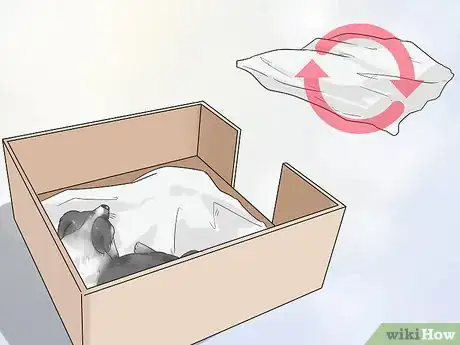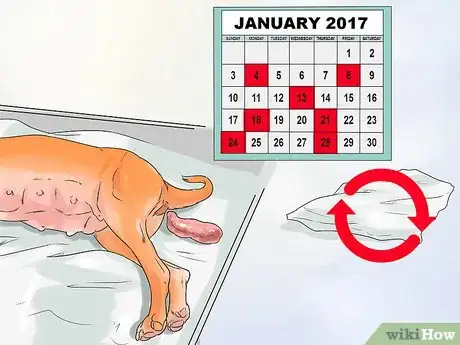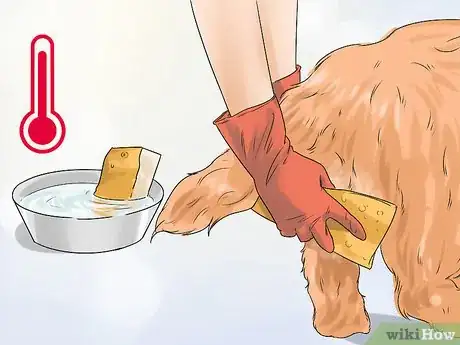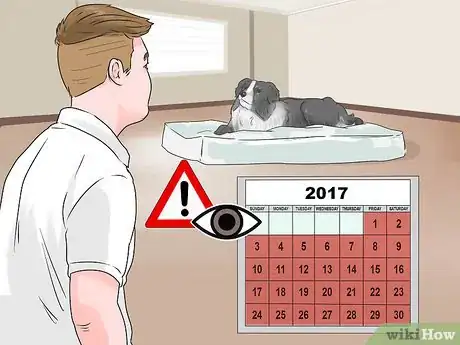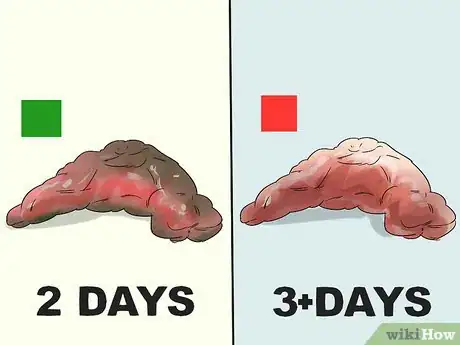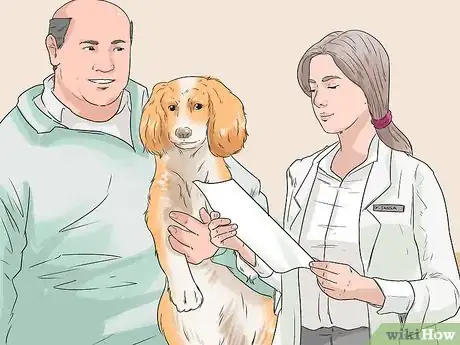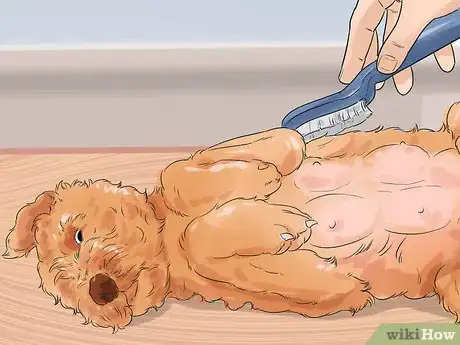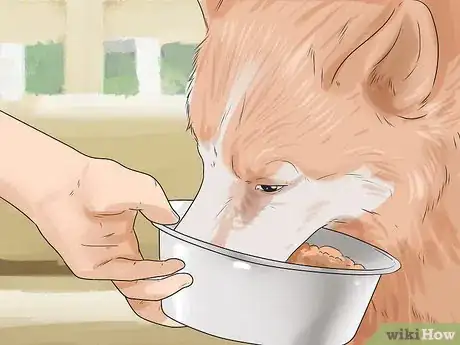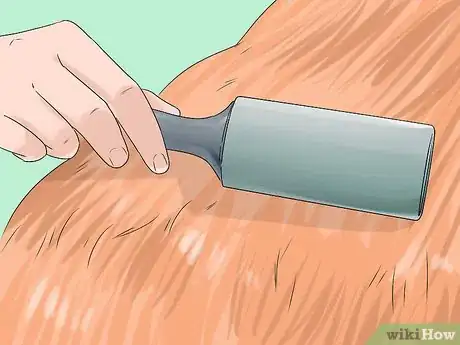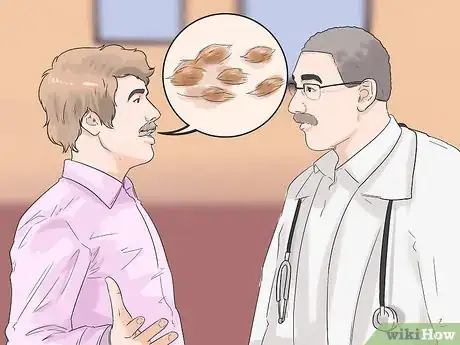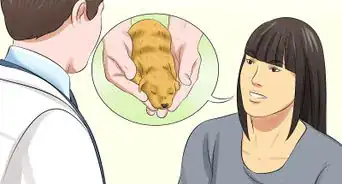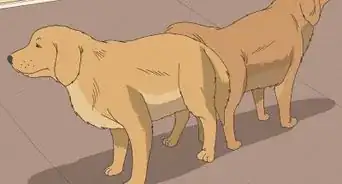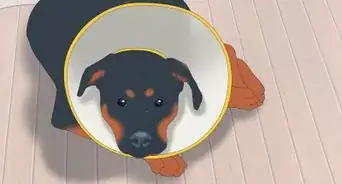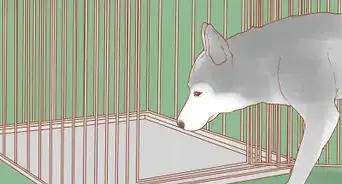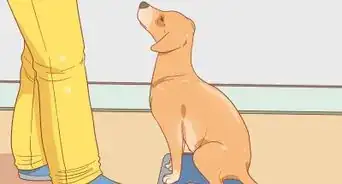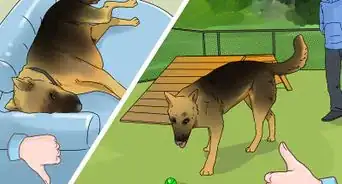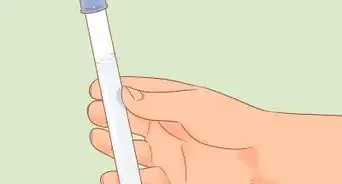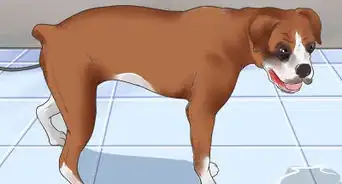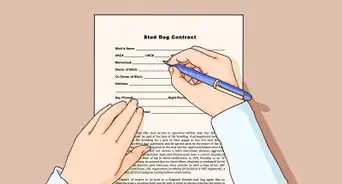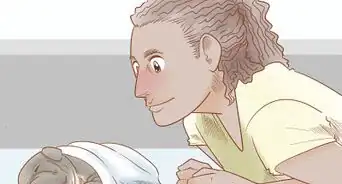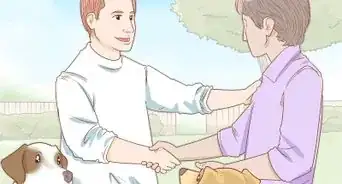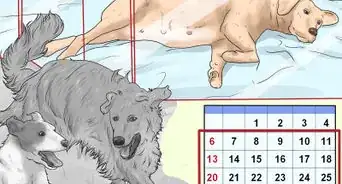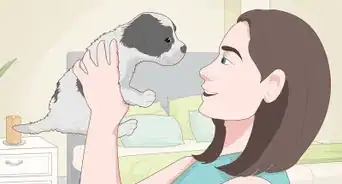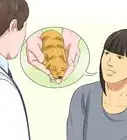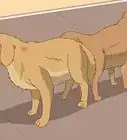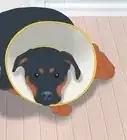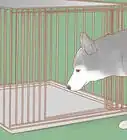This article was co-authored by Kinsey Moses. Kinsey Moses is a Dog Breeder and the Co-Founder of Haystack Mountain Bernedoodles in Mead, Colorado. With 20 years of experience between her, her husband Sam, and her mother, they specialize in ethical and premium dog breeding, which prioritizes the health, conformation, and upbringing of each dog in their program. Kinsey earned her Bachelor's degree in Integrative Physiology from the University of Colorado Boulder, and her husband Sam holds a BS in Kinesiology from San Diego State University and a Master's in Applied Exercise Science from Concordia University Chicago.
This article has been viewed 43,811 times.
After your dog gives birth, she will experience two different types of shedding. First, for the first couple weeks after the birth, the uterine lining will shed. Additionally, your dog will probably also shed hair due to hormonal changes and stress. To manage both uterine shedding, change the bedding in the whelping box once a day, keep the dogs clean, and watch for any complications in the mother dog. To help the shedding of hair, use a lint roller, change the bedding, and get the vet to check the dog out to make sure it's not an underlying condition.
Things You Should Know
- Your dog will shed their uterine lining (lochia) after giving birth, so change the bedding regularly after each shedding episode.
- Use a wet sponge to remove fetal fluids or blood to keep your dog healthy and clean.
- Use an automated vacuum to help clean up when your dog is shedding.
- Brush your dog’s hair regularly as they shed their fur after giving birth and keep them well hydrated; the hair loss should subside in a few days.
- Do not hesitate to take your dog to a vet if you experience any complications.
Steps
Maintaining Cleanliness During Uterine Shedding
-
1Change the bedding after the birth. After the dog has given birth to the litter, she will shed part of the uterine lining, which is called lochia. Right after the birth, you should immediately change the bedding. During the birth, she will have shed not just lochia, but also other fetal tissue. As soon as the birthing is done, switch the blankets, newspaper, and other materials in the whelping box.
- To change the bedding, you can try to get the help of another person. You or the other person can hold the dog while the other changes the bedding. If you don't have help, move the mother and puppies to one side of the whelping box, then lift up the empty side and immediately place the new bedding. Once that is down, move the mother and puppies to the clean side and do the same for the other side.
- Doing this helps reduce the risk of the mother dog and the puppies getting an infection.
-
2Switch the bedding often while the dog sheds. After the birth, the mother dog will continue to shed lochia. To keep the whelping box clean, make sure to change the bedding often until she stops shedding. Depending on how much she is shedding, you may need to do this multiple times a day or once a day.
- She may not shed a lot of lochia, but it can still leave a mess on the bed or lead to infection for the dog and the litter. Keep an eye on the bedding as you check on the puppies. If you notice a mess on the bedding, change it.
Advertisement -
3Wipe down the dog. As your dog sheds lochia, you should give her a sponge bath. Do this immediately after she has given birth to remove any of the fetal fluids and blood. Then, wipe her down once or twice each day, depending on how much she is shedding.
- Use a high-power blow dryer, to blow out their loose undercoat. This keeps the hair at that facility instead of your home.
- When sponging off your dog, you should use warm water and wipe the area gently.
Protecting Your Dog’s Health
-
1Check your dog every day. You should do this while the dog is still shedding the lochia. Make sure the shedding decreases as the days pass, that it changes in color from greenish to red and then brown, and note the consistency.
- You should do this for at least two weeks. However, some dogs will shed small amounts for up to six weeks.
-
2Recognize what is normal shedding. After your dog gives birth, she will shed part of the uterine lining as it cleans itself. The shedding occurs in vaginal discharge called lochia. After the birth, the discharge is generally greenish or blackish for around two days, and then it becomes reddish and brownish.[1]
- The discharge the dog sheds should not have an odor.
-
3Take your dog to the vet if there are any complications. If the lochia that your dog sheds changes, there may be a problem. If the discharge is thick, grey or pale in color, or starts to have an odor, there is something wrong. You should take your dog to the vet or have the vet visit your home immediately.
- If you notice any blood in the discharge, not just a normal reddish color, contact the vet.
- This is a symptom of an infection of the uterus or an infected retained placenta.
- Tell your vet, "My dog's discharge isn't normal. It has an odor, it is very thick, it's black, or it's full of blood. I think she needs to be checked out."
Managing Hair Loss After Birth
-
1Brush your dog’s hair. The hair loss the occurs after pregnancy happens because new hairs are pushing out old hairs. Hormonal changes and stress may also lead to postpartum hair loss. To help the dog shed the hair in a contained way, brush her hair every day.
- This can help prevent hair from getting all over your home.
-
2Feed your dog the proper nutrition. After the dog gives birth, make sure that she starts eating after around 12 hours. You can feed her twice what she normally eats because she needs more calories to recover from the birth. Choose a high quality dog food with quality protein and fats.[2]
- You may want to give your dog puppy food. Puppy food can provide her the nutrients she needs for recovering after the birth and while lactating.
- Talk to your vet about the proper diet for your dog. They should advise you on what to feed your nursing dog, but if she's shedding, they can suggest some food that may help.
-
3Use a lint roller. If the hair is staying in the whelping box or getting on the furniture, you can use a lint roller to collect hair. This is an easy and quick way to gather the hair and remove it from surfaces.[3]
-
4Talk to your vet about the hair loss. Hair loss is normal after a dog gives birth. However, hair loss may also be a symptom of a separate condition. To be safe, tell your vet about the hair loss during one of the postpartum visits. They can check to make sure everything is okay with your dog.[4]
- Tell your vet, "My dog is shedding a lot of fur. I'm worried something is wrong. I think she should be checked out just to make sure she is healthy."
Expert Interview
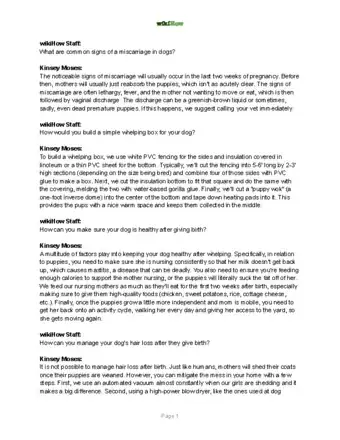
Thanks for reading our article! If you'd like to learn more about taking care of dogs, check out our in-depth interview with Kinsey Moses.
References
- ↑ https://pethelpful.com/dogs/Dog-Health-Common-Complication-in-Dogs-After-Giving-Birth
- ↑ https://www.vetinfo.com/what-to-feed-dogs-after-giving-birth.html
- ↑ https://andreaarden.com/dog-facts-and-trivia/shed-happens-how-to-manage-dog-shedding/
- ↑ https://pethelpful.com/dogs/Dog-Problems-After-Giving-Birth
About This Article
To manage postpartum shedding in dogs, start by immediately changing the bedding after the mother gives birth. Continue replacing the bedding with fresh materials at least once per day. It's also important to sponge bathe the mother 1-2 times each day to keep her clean, and brush her fur at least once a day to control shedding. Feed her high quality dog food and give her twice the amount she normally eats, since she needs the calories to recover. Continue monitoring, sponging, and brushing your dog daily for 2-6 weeks until she regains her strength and stops shedding. For tips on removing fur from your furniture, read on!
